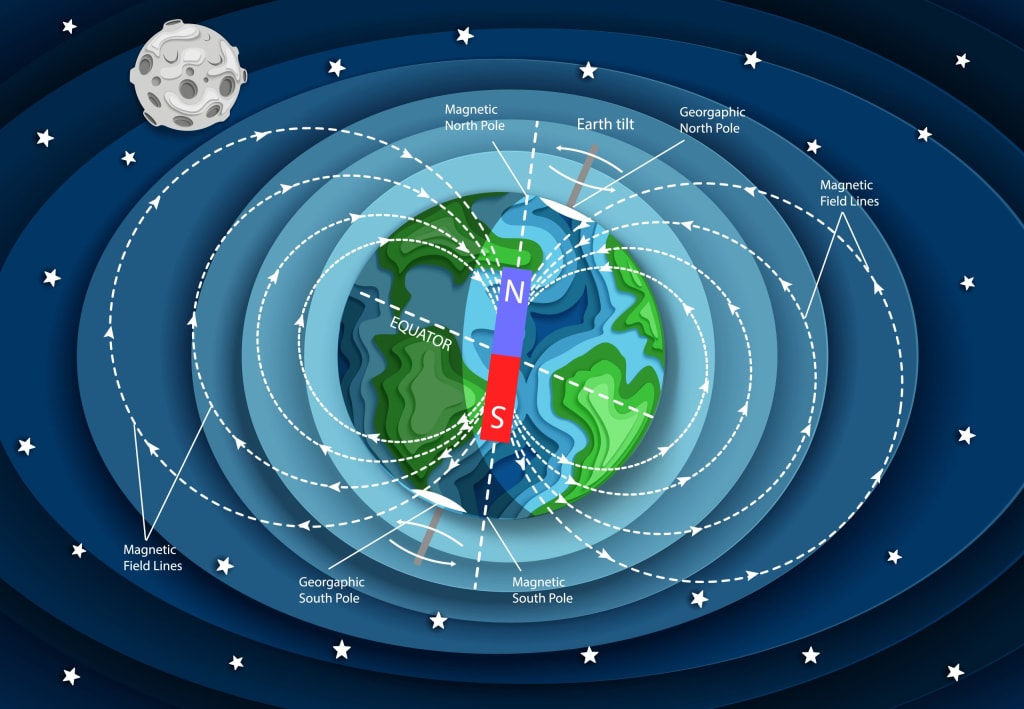Earth's Poles
Why the Earth's Poles Are Set to Reverse

Solar eclipses are mesmerizing events where the Moon and the Sun align perfectly, creating a stunning display in our sky. Despite the Sun being about 400 times larger than the Moon, they appear the same size from Earth because the Moon is approximately 400 times closer to us. However, this celestial coincidence won't last forever. The Moon is gradually drifting away from Earth at a rate of about 1.5 inches per year. Due to this movement, the Moon will eventually be too far away to completely block out the Sun, meaning solar eclipses will no longer occur. NASA estimates that the last solar eclipse will happen in roughly 600 million years. While we won't be around to witness this final eclipse, it’s fascinating to think about the cosmic changes our planet will undergo.
Speaking of astronomical events we won't witness, seeing a star explode with the naked eye might be another phenomenon that remains elusive. We have observed stars dying through telescopes, but a supernova visible to the naked eye has yet to be seen in modern times. Betelgeuse, a red supergiant star located about 1,000 light-years away, is a prime candidate for this spectacular event. Currently in the late stages of its life, Betelgeuse is undergoing core carbon burning, a phase that typically lasts around a thousand years. While it's uncertain when Betelgeuse will explode, it will undoubtedly be a remarkable sight for future generations. If you’re eager to spot Betelgeuse, look for its distinctive muted orange-red hue in the January and February night skies or before sunrise in early August.
Our planet itself will also experience significant transformations over millions of years. Earth’s continents are in constant motion due to tectonic activity. About 310 million years ago, they were part of a supercontinent called Pangaea, which began to break apart around 180 million years ago. Scientists predict that in the next 200 million years, another supercontinent may form. This new landmass could come together in several different ways, all of which link back to the ongoing continental drift that started with Pangaea's breakup.
In addition to changes in landmasses, Earth's day length is slowly increasing. This gradual change is due to the Moon’s gravitational influence, which is causing Earth’s rotation to slow down. Using a laser ranging retroreflector, scientists have measured that our days have lengthened by about 1.4 milliseconds over the past century. Over a more extended period, the days have stretched by an average of 2.5 milliseconds per century over the last 2,000 years. At this rate, it will take approximately 180 million years for a day on Earth to last 25 hours.
In the distant future, our galaxy, the Milky Way, is on a collision course with its neighbor, the Andromeda galaxy. Despite the universe expanding, gravity is pulling these two galaxies together at a speed of about 186 miles per second. This colossal merger is expected to occur in roughly 4.5 billion years. Although it sounds dramatic, it’s likely that this galactic collision will pass relatively unnoticed from our perspective within the solar system.
Saturn’s iconic rings are another cosmic feature that won’t last forever. NASA’s Cassini mission revealed that Saturn's rings are losing mass at a rapid pace, with material being pulled into the planet. These rings, which might have formed relatively recently in cosmic terms, are expected to disappear in a few hundred million years.
One of the more immediate changes we might witness, albeit still far in the future, is the potential collapse of Earth’s magnetic field, leading to a flip of the North and South Poles. For the past 3,000 years, the magnetic field has been weakening. If this trend continues, the poles could switch in less than 1,000 years. This transition could leave Earth temporarily vulnerable to increased cosmic radiation. Currently, we observe a weakened magnetic field in the South Atlantic anomaly, affecting satellite operations.
While these cosmic and terrestrial changes may seem distant, they offer a glimpse into the dynamic and ever-evolving nature of our universe. Whether it's solar eclipses, supernovae, or continental drift, the cosmos is full of wonders that remind us of our place in the vastness of space and time.
About the Creator
Bayu Setyawan
Hallo, I am a sales representative at Samsung Electronics Indonesia, blending industry expertise and creativity to craft compelling stories, insightful articles, engaging content, and inspiring through powerful and captivating narratives!
Enjoyed the story? Support the Creator.
Subscribe for free to receive all their stories in your feed. You could also pledge your support or give them a one-off tip, letting them know you appreciate their work.






Comments
There are no comments for this story
Be the first to respond and start the conversation.